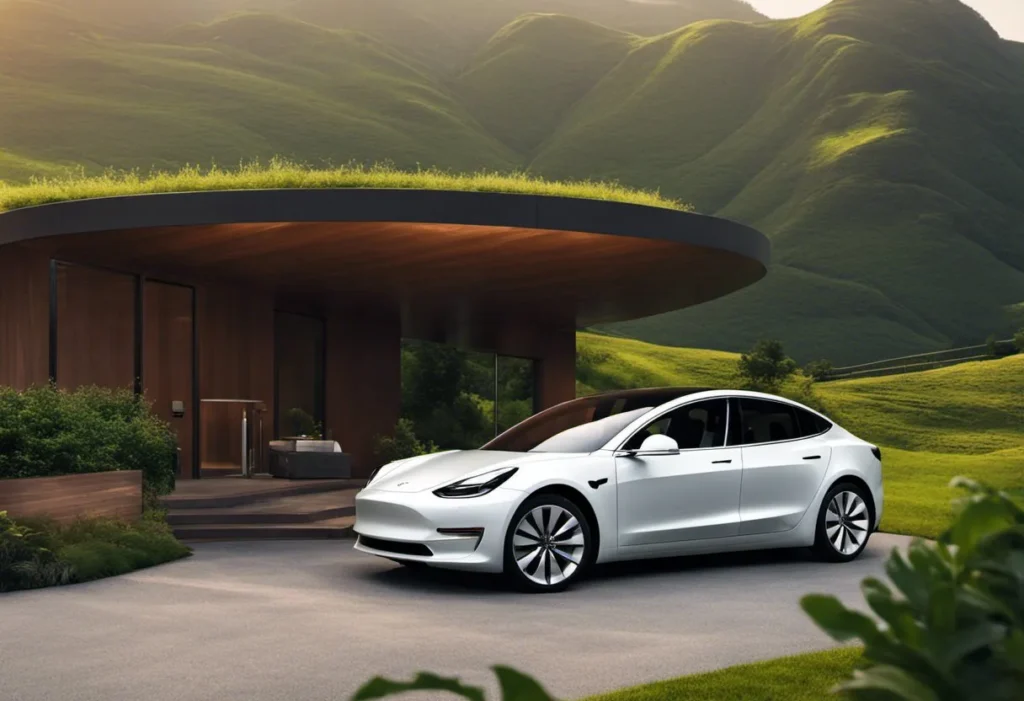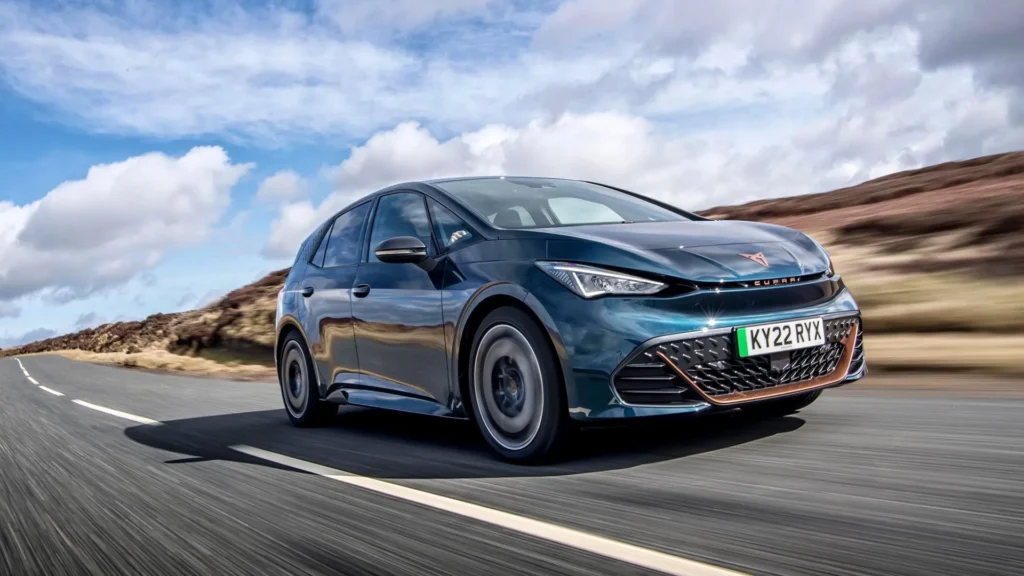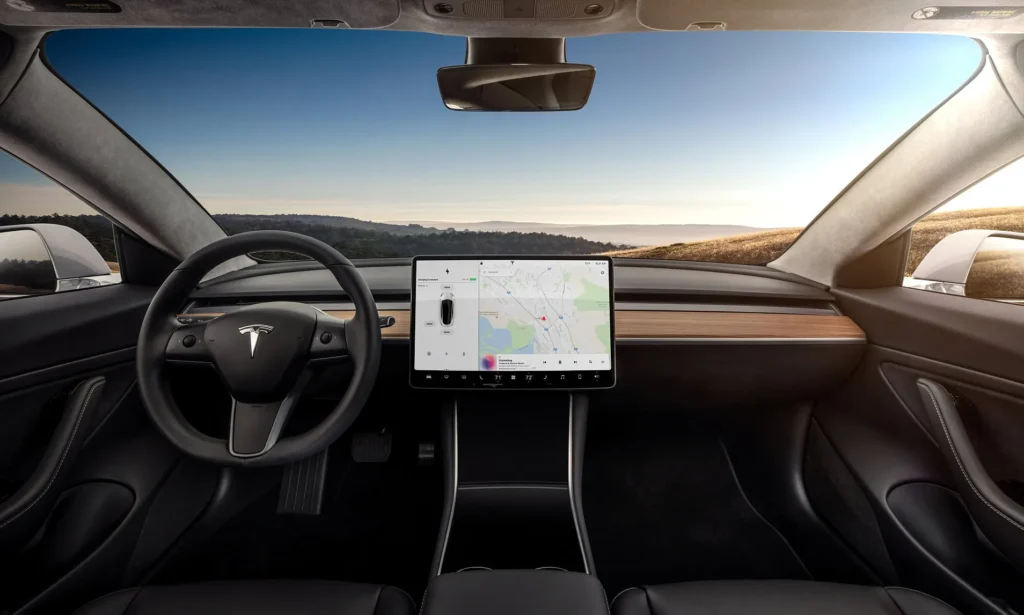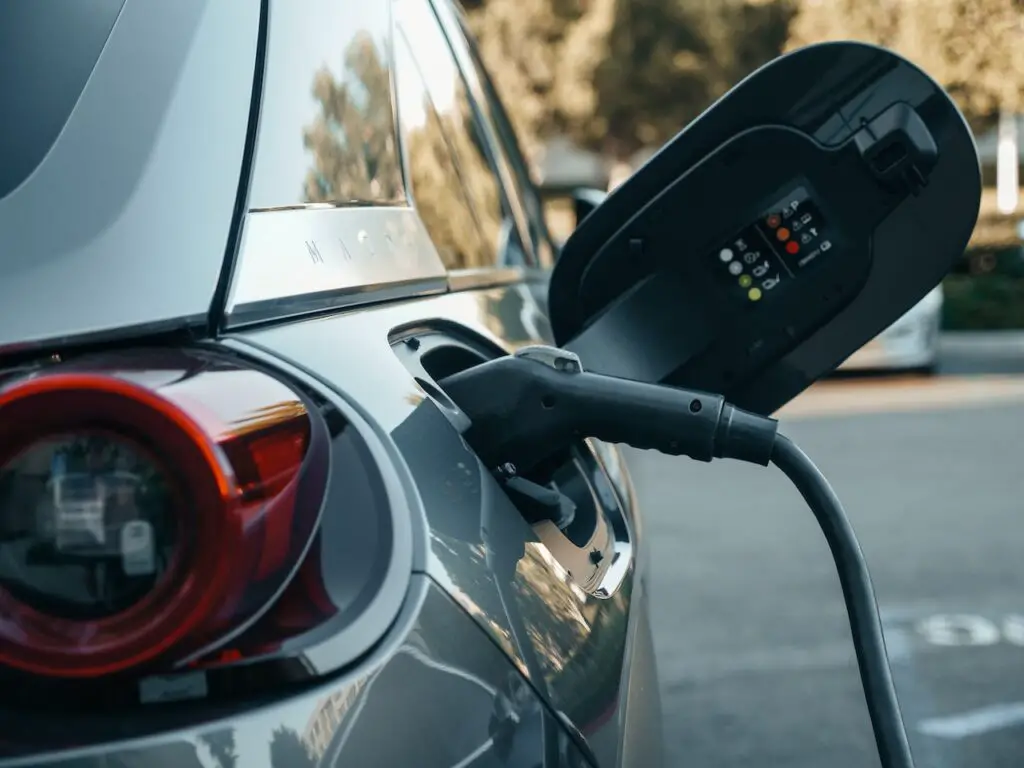As someone who cares about the environment and the future of our planet, I’ve been intrigued by the rise of electric vehicles.
These cars are powered by electricity instead of gasoline, which means they produce zero emissions and have the potential to revolutionize the way we travel.
In this guide, I’ll be exploring the world of electric vehicles and sharing everything you need to know about this exciting and innovative technology. So buckle up and let’s hit the road!

Basics of Electric Vehicles
What is an Electric Vehicle
As someone who’s always been interested in cars, the rise of electric vehicles (EVs) has had me excited by the technology and the improvements over traditional gas vehicles.
EVs use rechargeable batteries to store energy, which powers an electric motor for propulsion source. Compared to conventional cars that run on internal combustion engines (ICE), EVs can be more energy-efficient, producing fewer emissions.
Evolution and Expectations in 2023
Over the years, I’ve seen electric vehicles rapidly evolve and improve in performance, range, and charging capabilities, and 2023 promises further advancements in this field. With more companies investing in EV technology and governments supporting clean transportation initiatives, I expect to see more electric cars on the road, offering increased range, faster charging, and improved affordability.
Different Types of EVs
There are a few different types of electric vehicles available today:
- Battery Electric Vehicles (BEVs): These are purely electric cars that use a battery pack to store and provide electricity for the motor and other components of the vehicle. Examples include the Tesla Model S, Nissan Leaf, and Chevrolet Bolt. The majority of this guide will cover this type of EVs.
- Plug-in Hybrid Electric Vehicles (PHEVs): PHEVs have both an electric motor and an internal combustion engine. They are charged by plugging into the electricity grid the same way a BEV is and can run on electricity for a limited range, but can then switch to gasoline when the batteries are depleted. While the availability of the ICE servers as a useful backup when the battery is out of power, it is also more likely to run out of power given the battery in a PHEV is normally a lot smaller that what would be found in a BEV. A couple of examples are the Toyota Prius Prime and the BMW i3.
- Hybrid Electric Vehicles (HEVs): These vehicles combine an internal combustion engine with an electric motor, and they use regenerative braking to charge the battery. They do not plug in to recharge since the battery is charged by the engine and braking making any electric only range much smaller than a PHEV or BEV. Popular HEVs include the Toyota Prius and the Honda Insight.
The Future of Electric Vehicles
Electric vehicles will continue to grow in popularity and become more mainstream. With technological advancements such as solid-state batteries, we might see longer range EVs with significantly shorter charging times.
Plus, as renewable energy sources become more prevalent, the environmental benefits of driving an electric car will continue to improve.
Leading Electric Vehicles in Market
Tesla Model 3 and Y
These two models have been hugely popular, and it’s no wonder why – they offer long range, high performance, and the latest technology. The Model 3 is a beautifully designed sedan with excellent handling and comfort. The Model Y, on the other hand, is a versatile and spacious SUV that’s perfect for families.
While they are both near the top end in terms of price for their vehicle class, there can be no denying that Tesla is the clear innovation leader in the BEV market.
Nissan Leaf
The Nissan Leaf has a special place in my heart as one of the first mass-produced electric vehicles, and my first BEV.
It still holds a strong position in the market. due to its recent upgrades. The Leaf offers increased range and enhanced technology features, making it a great choice for those looking for an affordable and efficient EV.
Ford Mustang Mach-E
I must say, the Ford Mustang Mach-E has really impressed me. Combining the legendary Mustang name with environmentally-friendly electric power, the Mach-E provides an exhilarating driving experience. With its sleek design and excellent performance, Ford is leading the way in the transition to electric vehicles.
Volkswagen ID3 Platform
The Volkswagen ID3 is powered by a high-capacity battery that provides a range of up to 340 miles on a single charge. It has a futuristic interior with a digital dashboard and intuitive controls.
The same vehicle is also offered, slightly face-lifted, by some of VW’s other brands like as the Cupra Born. With the ID3, Volkswagen is leading the way in the electric vehicle revolution.

GM’s Electric Revolution
General Motors is stepping up its EV game, and I couldn’t be happier to see it happening. The Chevy Bolt EV is a popular, budget-friendly option that has attracted many buyers. Plus, GM has big plans to expand its electric lineup, including exciting new models like the Cadillac Lyriq luxury SUV.
Ford F-150: The electric truck
The highly anticipated Ford F-150 Lightning has caught my attention, and I can’t wait to see it on the streets. While I would prefer a smaller, more efficient vehicle, you only have to look around to see the appeal of owning a truck, and anything that can be done to make that more environmentally friendly gets my vote.
As an electric pickup truck, it combines the practicality and performance of a traditional truck with the all-electric benefits. The F-150 Lightning is set to revolutionize the truck market, and I’m eager to see how it fares.
Rivian R1T
Last, but not least, let me introduce you to the Rivian R1T. As an electric adventure vehicle, the R1T embodies the spirit of exploration and sustainability. With impressive power, a rugged design, and practical functionality, the R1T is set to make waves in the EV market as a modern take on the iconic pickup truck.
Performance and Specifications
Performance Indicators
When it comes to electric vehicles (EVs), there are several key performance indicators that I like to look out for, including range and acceleration. The range of an EV is determined by the size of its battery, and you can find some electric cars with impressive numbers, like the Tesla Model 3, which offers an estimated range of up to 333 miles. Acceleration is another important factor, as it determines how quickly the car can reach a certain speed. Many electric vehicles are known for their quick 0-60 MPH times, thanks to the instant torque provided by their electric motors.
Charging and Battery Life
Battery life and charging times are important aspects to consider when purchasing an electric vehicle. Most electric cars use lithium-ion batteries, which provide a balance between energy density and recharge times. These batteries can last for years and many miles, but they may degrade over time. Some EV manufacturers offer warranties to cover the battery, giving you peace of mind.
Charging an electric vehicle can be done at home or through a network of public charging stations. The time it takes to charge depends on the battery size, the charger’s power output, and the current state of the battery. Overnight charging at home is usually sufficient to reach full charge, while fast charging stations can reduce the charging time dramatically.
Comparison with Gasoline Vehicles
Comparing electric vehicles to their gasoline counterparts, I find that EVs offer several advantages. The absence of a traditional engine means that there is zero tailpipe emissions, and due to the simplified drivetrain often more cargo space available and less maintenance required.
Moreover, the instant torque provided by the electric motor results in swift acceleration, making for a responsive and enjoyable driving experience.
On the other hand, gasoline vehicles still have an edge when it comes to driving range and refueling times. A typical gasoline car can be refueled in a matter of minutes, while even fast EV charging can take significantly longer.
Additionally, gasoline cars usually have longer ranges on a single tank, although advances in battery technology are helping to close this gap, and as we all should be striving to drive less, these factors will become less important as time progresses.
Overall, electric vehicles provide a compelling drive experience and eco-friendly alternative to gasoline vehicles. With continued advancements in battery technology and charging infrastructure, their benefits, such as impressive range, performance, and cargo space, will only continue to grow.
Comfort and Style
Space and Comfort
When it comes to electric vehicles, space and comfort are essential aspects to consider. In my experience, all EVs provide ample legroom, headroom, and cargo space for both passengers and belongings, and usually more space than their gas powered counterparts.
For instance, the 2023 Kia EV6 not only boasts an impressive electric range of 310 miles but also offers a spacious and comfortable interior, making it ideal for families.
Style: From Exterior to Interior
I’ve noticed that electric vehicles often showcase unique and futuristic exterior designs, making them stand out on the roads. From streamlined body shapes to distinctive accents, EVs are designed to be both visually appealing and aerodynamic.
Moreover, interiors often complement the exterior style, featuring modern and lavish materials such as leather seats, wood trims, and cashmere accents. As a result, you can enjoy not only a highly efficient driving experience but also a stylish and sophisticated cabin atmosphere.

An Overview of Infotainment Systems
An essential aspect of any modern vehicle is the infotainment system, and electric vehicles are no exception. Many EVs are equipped with cutting-edge infotainment systems that offer a wide range of features, such as navigation, smartphone integration, voice recognition, and audio controls.
These systems are often user-friendly and intuitive, making it a breeze for drivers and passengers to stay connected, entertained, and informed while on the go. So, whether you need navigation assistance or want to enjoy your favorite tunes during your journey, it’s easy to do so thanks to the advanced infotainment systems found in today’s electric vehicles.
Safety Measures
Safety standards in Electric Vehicles
As we dive into the world of electric vehicles, it’s essential to address their safety measures. Electric cars must meet the Federal Motor Vehicle Safety Standards, which means they undergo the same rigorous safety testing as conventional vehicles in the United States.
Ensuring robust functional safety in electric vehicles is crucial, especially with autonomous vehicles, where human intervention might be limited or non-existent. Collaboration between organizations and industry stakeholders is necessary to establish safety guidelines and best practices.
Some of the key safety measures in EVs include:
- Battery protection: EVs use high-voltage batteries that require safety mechanisms to prevent thermal runaway, which can result in fire or explosion.
- Structural integrity: Because of the heavy weight of the battery, electric vehicle manufacturers need to design the vehicle’s structure to maintain both safety and efficiency.
- Emergency response: In the event of an accident, EVs need to have proper emergency response procedures in place to handle potential risks related to high-voltage batteries.
How Safe are Tesla Cars?
Tesla is a well-known name when it comes to electric cars, and safety is always a concern for any vehicle on the road. Thankfully, Tesla has a good track record in vehicle safety. Some of their cars, like the Model S, have even earned the highest possible ratings from organizations like the National Highway Traffic Safety Administration (NHTSA).
In addition to meeting conventional safety standards, Tesla vehicles also come with advanced safety features, including driver assistance systems such as Autopilot, which can help improve the car’s overall safety on the road.
However, I must also point out that no car is 100% safe, and there have been some concerns regarding Tesla’s Autopilot feature, highlighting the importance of staying vigilant and always maintaining control of the vehicle when driving.
To summarize, electric vehicles, including Tesla cars, need to meet strict safety standards and include various measures to ensure they are as safe as possible on the road. It’s essential, however, for drivers to stay aware and follow recommended driving practices.
Economic Aspect of Electric Vehicles
Cost Comparison: Electric Vs Gasoline Vehicles
As an owner of an electric vehicle (EV), I’ve noticed some significant differences in costs when comparing it to traditional gasoline vehicles. For starters, EVs tend to have a higher initial price tag, but they also come with lower operating costs.
The electricity needed to power my EV is generally cheaper than the gasoline I would need for an equivalent internal combustion engine (ICE) vehicle. Plus, EVs have fewer moving parts, which means I also save money on maintenance as there’s less that can go wrong.
Another aspect I’ve noticed is the difference in fuel efficiency. While EVs have higher upfront costs, they can lead to savings in the long run due to decreased tailpipe emissions and lower overall energy consumption. The money I save on gasoline adds up over time, making the total cost of ownership for my EV more favorable in comparison to ICE vehicles.
Government Incentives and Tax Credits
As an EV owner, I’ve also taken advantage of the various government incentives and tax credits offered for purchasing electric vehicles. In the United States, for example, buyers of new EVs can qualify for a federal tax credit of up to $7,500, depending on the vehicle’s battery capacity. This tax credit has been a great help in offsetting the initial cost of my EV.
In addition to federal incentives, there are also state-level incentives and rebates that vary depending on where you live. Some states offer additional tax credits, reduced vehicle registration fees, and even access to high-occupancy vehicle lanes for EV drivers like me. These perks make driving an EV even more appealing and are yet another way I’m saving money with my electric vehicle.
Being an EV owner has been a fantastic experience. From the cost savings on fuel and maintenance to the government incentives and tax credits, I’ve found the economic aspects of owning an electric vehicle to be quite favorable. If you’re considering an EV, don’t forget to factor in these economic benefits as part of your decision-making process.
Environment Impact and Sustainability
Greenhouse Gas Emissions
One of the most significant benefits of electric cars is the reduction of greenhouse gas emissions. Unlike petrol or diesel cars, electric vehicles (EVs) don’t release harmful exhaust emissions. This is because they run on electric power, which can be sourced from sustainable and renewable resources1. However, it’s essential to acknowledge that the electricity production itself can generate emissions, depending on the energy sources used.
To give a more accurate understanding, I’ve looked into a study by the European NGOs promoting sustainability. It revealed an average EU electric car is close to three times better, emission-wise, compared to a combustion engine vehicle.
Battery Lifecycle and Recycling
The environmental impact of electric cars goes beyond their operation. The production and disposal of batteries, specifically lithium-ion cells, play a significant role in the vehicle’s overall sustainability2. These batteries rely on raw materials like cobalt, lithium, and rare earth elements, which are not only scarce but also linked to significant environmental issues.
In recent years, there’s been a growing focus on battery lifecycle management and recycling. The aim is to extend the useful life of batteries and minimize the need for raw materials in the long run. This will not only reduce the environmental footprint but also avoid a mineral problem in the future3.
In conclusion, while electric cars have their environmental challenges, they are undoubtedly a step forward compared to petrol and diesel vehicles. As battery technology and electricity production evolve, EVs will continue to become more environmentally friendly, offering a sustainable option for the future of transportation.
Footnotes
- https://www.energysage.com/electric-vehicles/advantages-of-evs/evs-environmental-impact/ ↩
- https://www.nytimes.com/2021/03/02/climate/electric-vehicles-environment.html ↩
- https://www.washingtonpost.com/climate-environment/2023/09/19/electric-cars-better-environment-fossil-fuels/ ↩
Frequently Asked Questions
What are the main advantages of electric vehicles?
I’ve found that there are several key advantages to BEVs. First, they produce zero tailpipe emissions, making them cleaner for the environment. Second, EVs are highly efficient—with electric motors often scoring above 100 MPGe, which means less energy is wasted and more is used for propulsion. Finally, EVs tend to have lower operating costs due to reduced fuel expenses and lower maintenance needs.
How does electric vehicle technology work?
Electric cars run on battery packs that store electricity, which is then used to power the electric motor. This motor directly drives the wheels, providing a smooth and quiet driving experience.
Braking and deceleration can be used to top up the battery while the vehicle is in use, the motors are turned into generators putting electricity back into the battery, and this increased resistance means the cars braking system doesn’t need to work as hard reducing wear and saving on maintanance costs.
To recharge the battery, EV owners simply plug their vehicles into a compatible charging station, much like charging a mobile phone.
What is the price range for electric cars?
Electric car prices can vary widely, depending on factors such as the battery capacity, model, and features. Prices for new vehicles can range from around $30,000 for more affordable models, to well over $100,000 for luxury and high-performance EVs.
In some markets used EVs can be purchased for well under $10,000, still expensive when compared to ICE beaters, but far better for the environment. A used EV will likely have less range than a new electric vehicle but if that is still sufficient for your needs you could make a large saving in the initial outlay.
Keep in mind that the initial upfront cost may be offset by potential long-term savings on fuel and maintenance.
Which electric SUVs are the best?
Personally, I am not a fan of SUVs, but I can see why they appeal to so many people. Some noteworthy options include the Tesla Model Y, offering great range and impressive acceleration, and the Audi e-tron, which combines luxury and all-wheel-drive performance. Recently, the Ford Mustang Mach-E and the Volkswagen ID.4 have also gained popularity as promising contenders in the electric SUV segment.
Which companies produce the best electric cars?
There are several companies currently producing excellent electric vehicles. Of course, Tesla is a well-known leader in the EV market, offering a variety of models with impressive range, performance, and technology. Other notable players include Nissan, with its popular Leaf model, Volkswagen’s ID3, and offerings from companies like BMW, Audi, and Jaguar, who have made significant strides in developing high-quality EVs.
How much does it cost to charge an electric car?
Charging costs for an electric car can vary depending on factors such as electricity rates, battery capacity, and charging station fees. Generally, charging at home can be quite affordable, with costs ranging from a few dollars to around $10 per full charge, depending on your local electricity rates. Charging at public stations may have additional fees, but even then, the overall cost of charging an EV tends to be much lower than the cost of fuel for a traditional gas-powered car.




